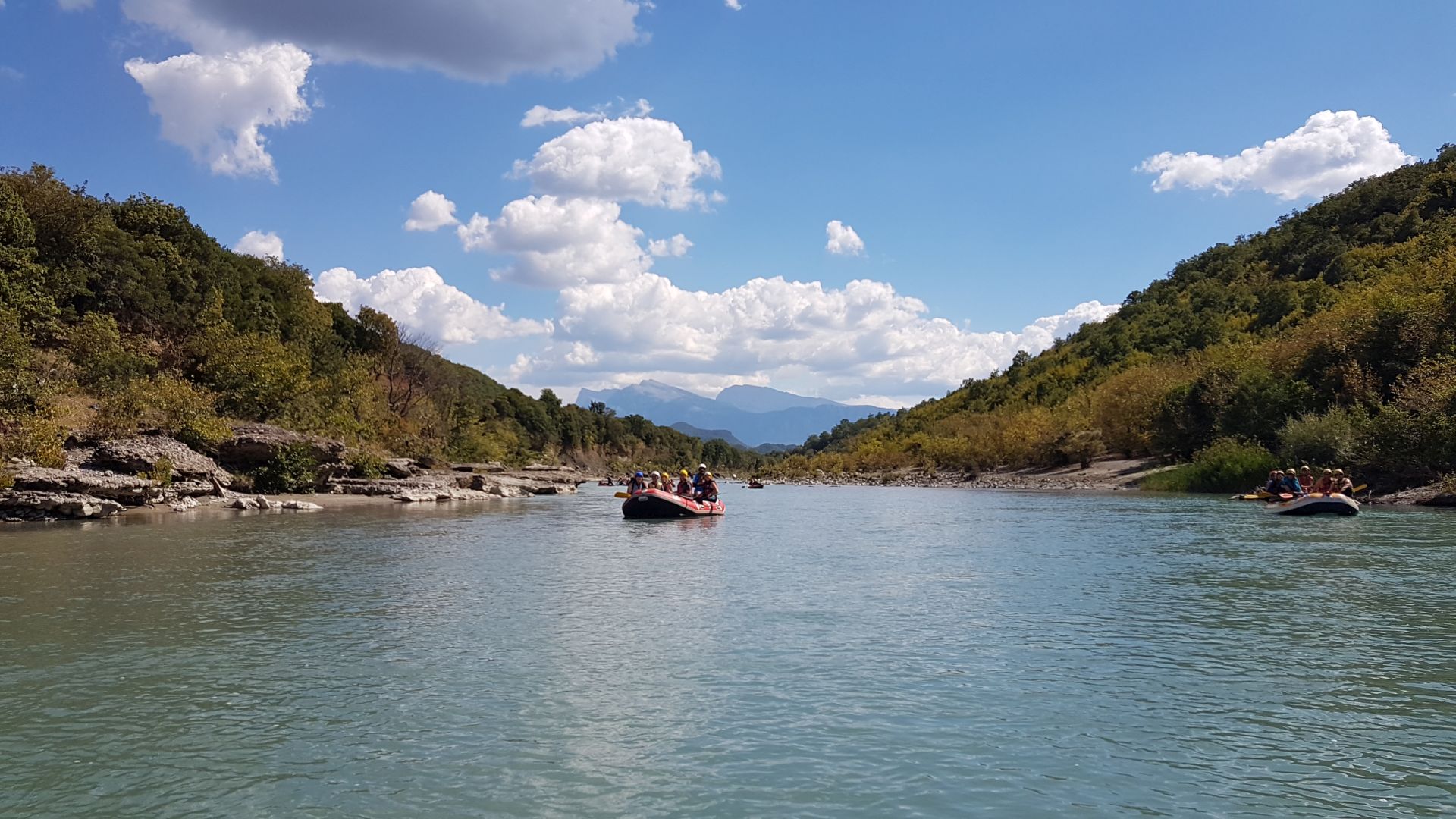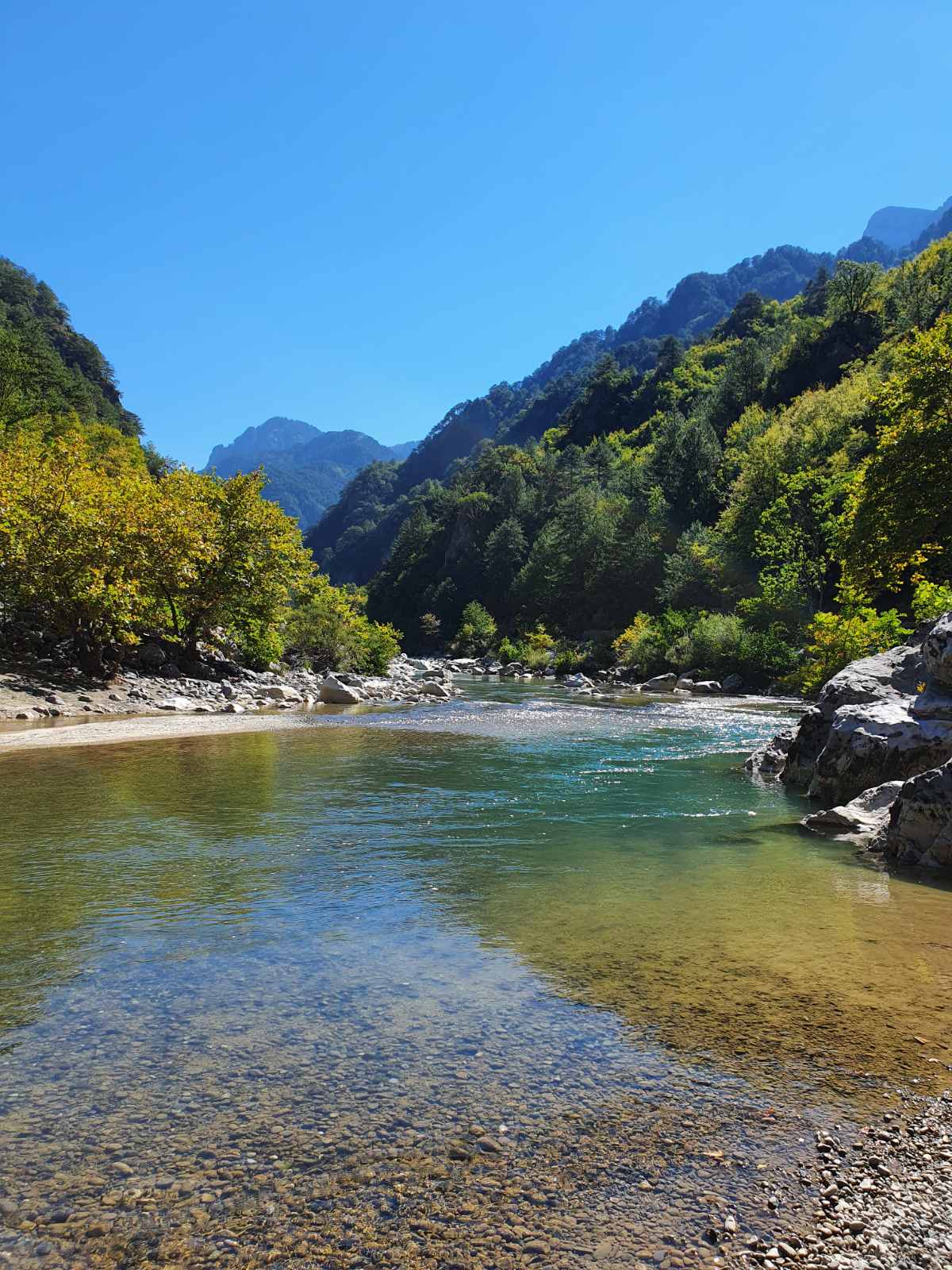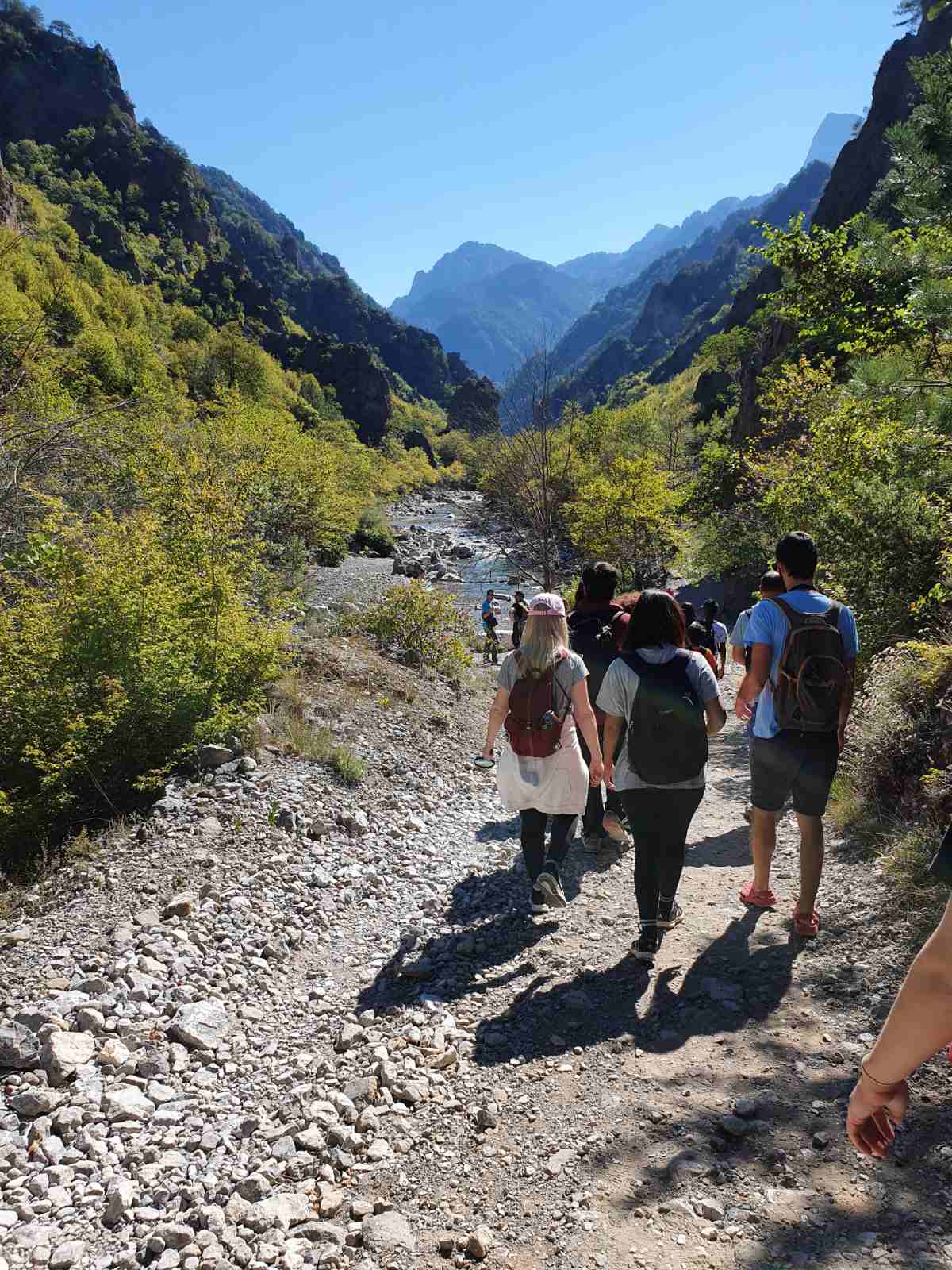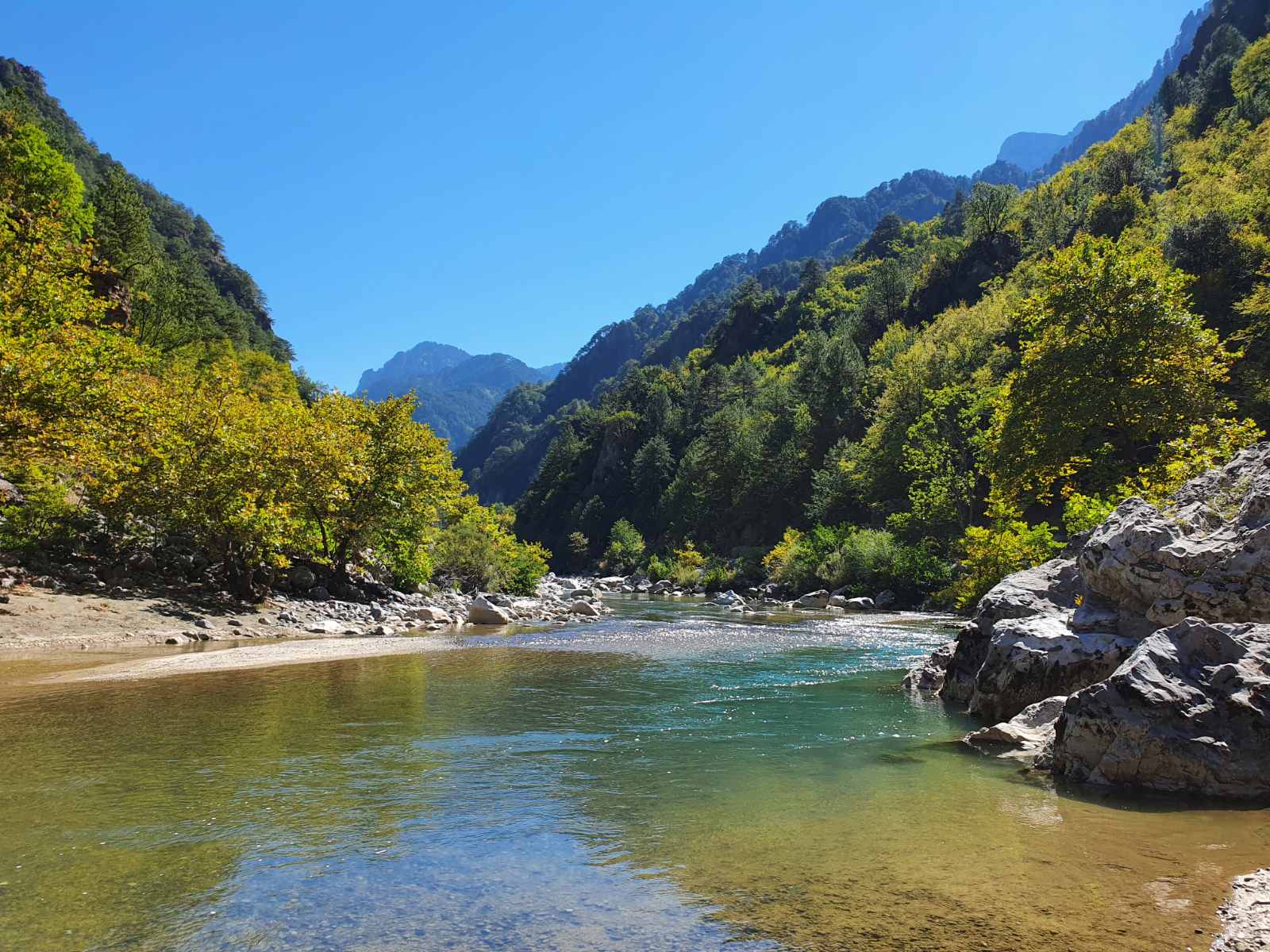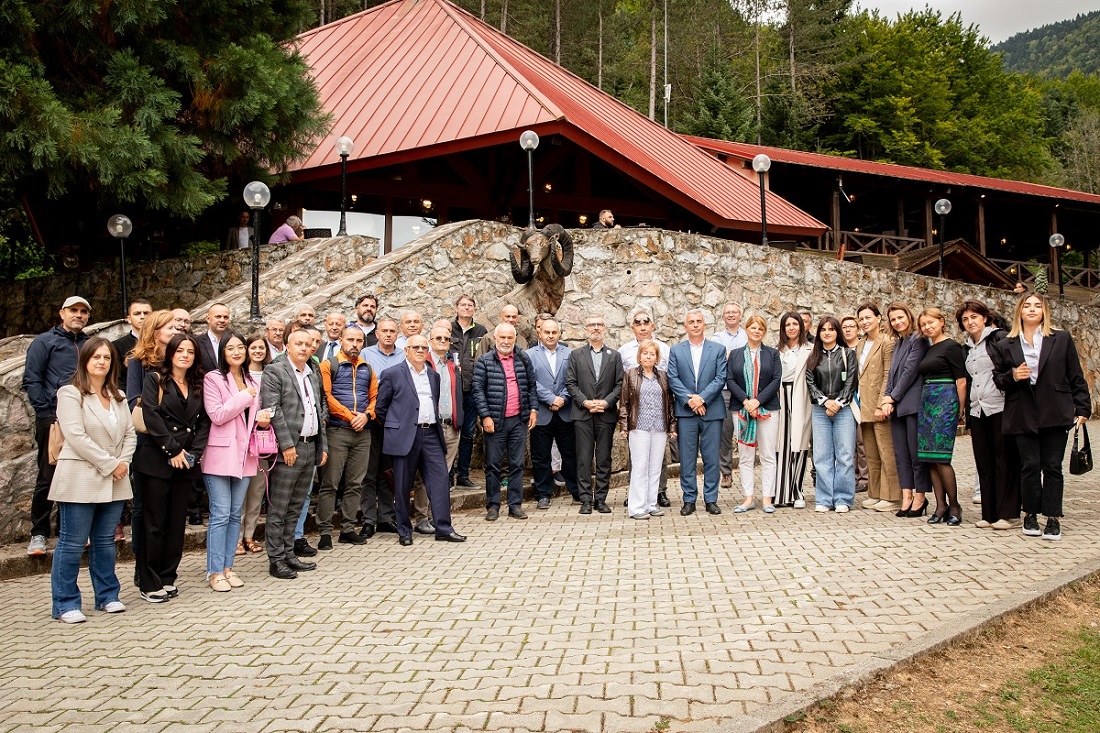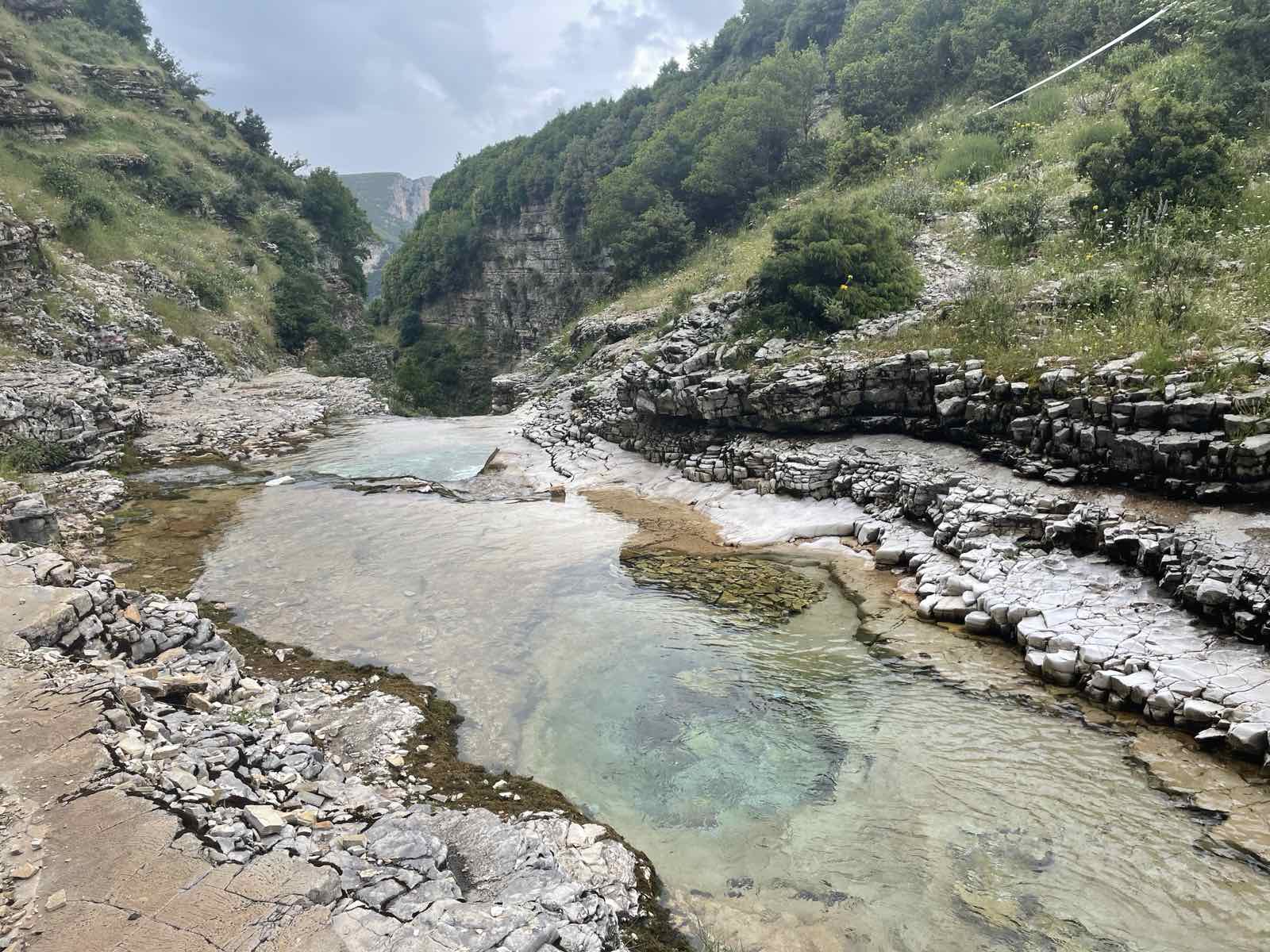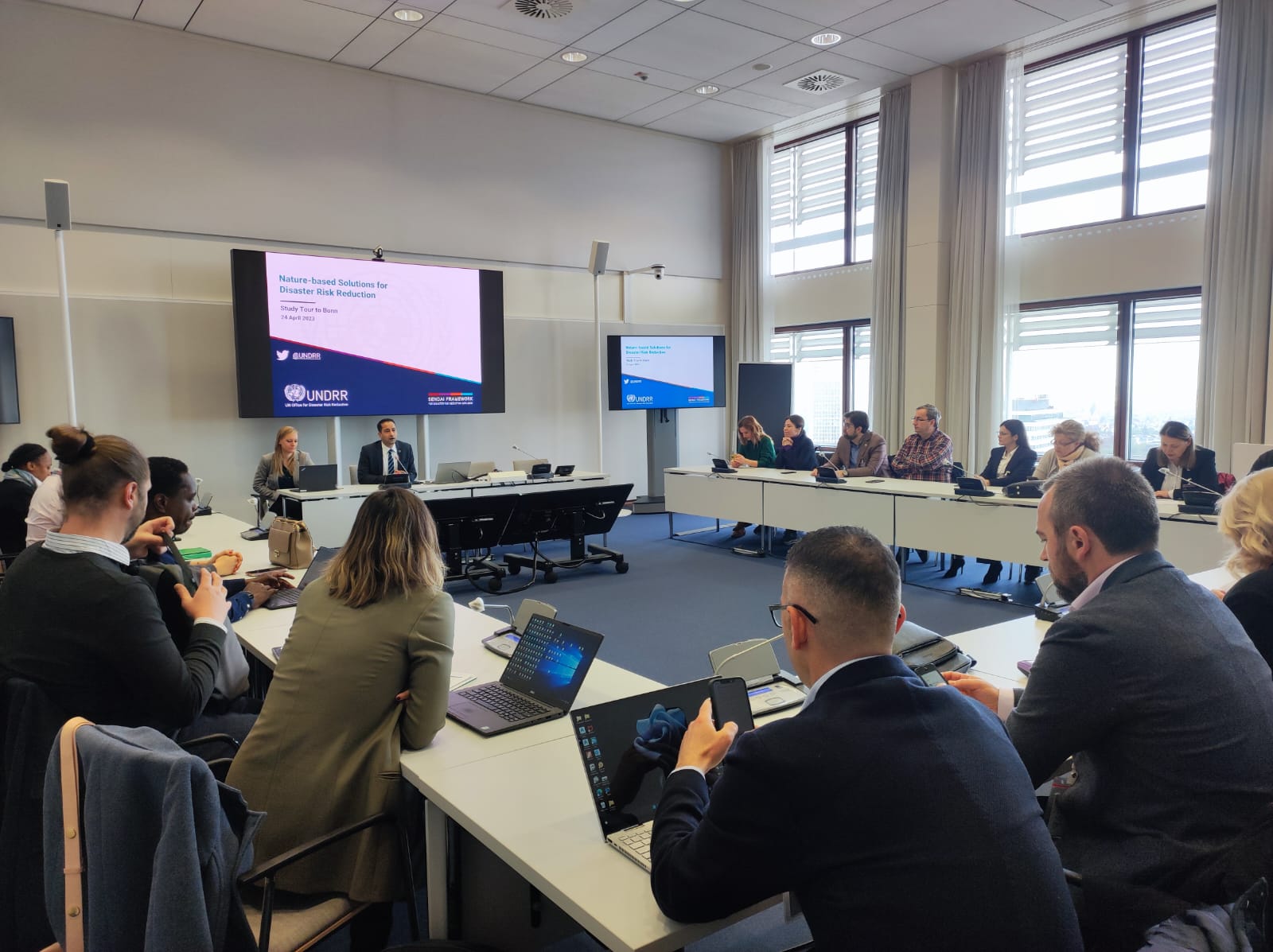Protecting the Aoos-Vjosa River and its tributaries
On World Rivers Day 2022, project partners for ‘Saving the last free-flowing wild river in Europe: Aoos/Vjosa’ were in Greece to promote protection of the Aoos and Vjosa Rivers, from the headwaters in Greece to the Albanian coast.
IUCN Regional Office for Eastern Europe and Central Asia (ECARO), Pindos Perivallontiki, the Mediterranean Institute for Nature and Anthropos (MedINA) and The Green Tank, dedicated the week to the Aoos River, and more specifically to its most vulnerable, unprotected section, between the North Pindos National Park and the Greek-Albanian border. The theme of the activities was twofold – to present the results of IUCN’s studies on the best protection for the Aoos catchment, and to promote transboundary cooperation for a wild river national park in Greece and Albania.
Four studies commissioned by IUCN presented the land use study, stakeholders, socio-economic situation, and proposals for best protection of the Aoos River catchment. There is strong local support for a protected area and a range of opportunities for further development of sustainable tourism and agriculture.
On 20 September, a meeting was held at the Ministry of Environment and Energy in Athens, with representatives from the Ministry, the Natural Environment and Climate Change Agency and consultants working on special environmental studies in the study region. The organizations then travelled to Ioannina and met with the political leadership of the Region of Epirus and representatives for Forest Protection and Water management.
On the evening of 22 September, the studies were presented at an open event, hosted by the Municipality of Konitsa and attended the Ambassador of Greece in Albania and the Consul General of Gjirokaster, the Consul General of Albania in Ioannina, local mayors and the local community.
On 23 September, the organizations carried out a cross-border rafting activity with Greek and Albanian representatives. The Greek representatives started from the 'Mesogefyra' location in Konitsa, crossed the Greek-Albanian border and met their Albanian counterparts, all together sending a message of unity and cooperation for protection of the river Aoos/Vjosa. Afterwards, additional guests joined the rafters in Permet to discuss the perspectives of transnational protection.
Local students and families took to the field on 24 September, for the third Home River BioBlitz – Exploring life on Aoos, was held in the river gorge. In the evening followed a ‘transboundary rock concert’, celebrated the river in the central square of Konitsa with the participation of Greek and Albanian artists: Giorgos Gakis and Troublemakers from Greece and Urban Band from Albania.
In all the week’s meetings and discussions, the will to protect the Aoos River along its entire length was strong.
Importantly, the Albanian government has recently committed to a national park on the Vjosa River and its tributaries, a great step towards overall protection. Three months ago, the Ministry of Tourism and Environment of Albania signed a memorandum of cooperation with the company Patagonia. The expectation is that in the early spring of 2023, the Vjosa National Park in Albania will become a reality.
Notes to editors:
1. The land use and stakeholder analysis studies for the Aoos Basin were implemented by the companies ECOMED, ENTEGRA P.C. & the think tank The Green Tank and were presented by experts Thomas Kollias and Madeleine Theohari.
The socio-economic study for the Aoos Basin was implemented and presented by the researcher of the Laboratory of Economic Policy and Strategic Planning (Erg.O.Poli.S.S.), of the Department of Economic Sciences of the University of Thessaly, Gaby Gavriilidis,
The synthesis study of results and recommendations was implemented and presented by the principal investigator, IUCN partner and former member of the Steering Commitee of the IUCN World Commission on Protected Areas, Andrej Sovinc, who coordinated all the above studies.
Main results of the land use study:
- There is more intensive agriculture / agricultural exploitation in Konitsa than in the other regions.
- Sustainable resource management measures will be needed in this area.
- An additional challenge for the region, beyond abandonment, is the installation of renewables and mainly those related to hydroelectric dams and accompanying projects.
Main results of the stakeholder analysis:
- There is universal support of the community for the regulation of activities aimed at protecting the river.
- 'Alternative' tourism is perceived as the way forward, but with regulation and in combination with other activities that support the region's economy.
- There is support for cross-border cooperation with Albania.
Main results of the socio-economic study:
- The social and economic landscape in the Aoos catchment as well as the natural beauty and uniqueness of the area suggest that the development of sustainable tourism activities combined with the cultivation of high-quality food products and small-scale livestock farming can be key drivers of economic development.
- This economic model places particular emphasis on the conservation of environmental resources for future generations, fostering a more human-centered philosophy of how societies and communities should develop.
- Unplanned tourism development that leads to unfair distribution of its economic benefits and negative impacts on the natural environment must be replaced by strategically planned alternative tourism policies that lead to local economic development, utilizing the endogenous strengths of each region.
Main results of the synthetic study and recommendations for the protection of the region:
- Rare and unique characteristics of Aoos: Cultural Value, Natura Value, Geological Value, Hydromorphological Value
- Development options: Ecotourism based on a protected natural area and a transboundary tourism destination
- Recommendation: Expansion the North Pindos National Park with various zones. The zooming will give solutions to current uses of natural resources.
2. The Aoos River flows for 70 km on. Its largest part is located within the North Pindos National Park. However, the section of the river after Konitsa, as well as its tributaries, are not subject to any protection regime. The Aoos (Vjosa in Albanian) on Albanian territory stretches for 200 km before flowing into the Adriatic Sea.
3. For more information on the open event in Konitsa: https://www.facebook.com/events/411823304212284
4. For more information on the Home River Bioblitz:
- https://www.facebook.com/events/609341040847668/
- https://www.rivercollective.org/, https://www.homeriverbioblitz.org/
- Professor of Botany, Mr. Stergios Papazis, accompanied the participants in the activity and shared with them his valuable knowledge about the flora of the area.
- Approximately 70 people participated in the activity (students of the Department of Biological Applications and Technologies of the University of Ioannina, beneficiaries of the HELIOS program from Ioannina and locals)
5. For more information on the rock concert in Konitsa: https://www.facebook.com/events/1734343150274674?ref=newsfeed

